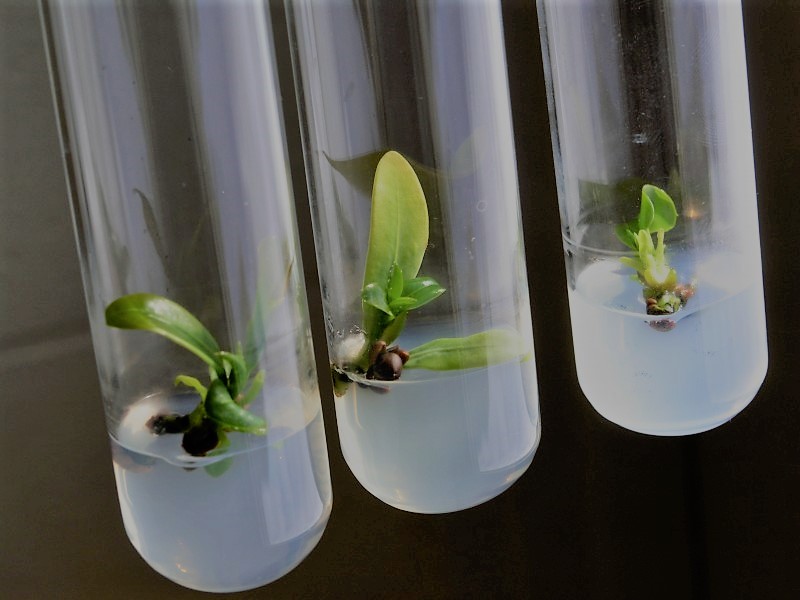MCQ ON PLANT TISSUE CULTURE class 12 for NEET | PLANT TISSUE CULTURE class 12 | MCQ PLANT TISSUE CULTURE with Answer | Check the below NCERT MCQ question for class 12 Biology based on the with Answers.

MCQ ON PLANT TISSUE CULTURE class 12 for NEET
MCQ on PLANT TISSUE CULTURE class 12 Biology with answers were prepared based on the latest pattern. We have provided class 12 Biology MCQs questions on PLANT TISSUE CULTURE with Answers to help students understand the concept very well.
MCQ ON PLANT TISSUE CULTURE is useful for NEET / CSIR / UGC / CBSE / ICSE / AIIMS / EXAM / AFMC EXAM / STATE LEVEL MEDICAL EXAM 2022-23, 2023-24
Introduction:
Plant tissue culture is the technique of in vitro maintaining and growing cells, tissues and organs etc and their differences on artificial medium under asceptic conditions inside suitable containers. Tissue Culture technique watch first practiced by Haberlandt in 1902 and Hanning. Is traditional breeding techniques failed to keep pace be demand and to provide sufficiently fast and efficient system for crop improvement under technology called tissue culture got developed.
It was learnt by scientist during 1950 that whole plants could be regenereted from explants, any part of a plant taken out and grown in a test tube, sterile conditions in special nutrient media. This capacity to generate a whole plant from any cell / explant is called Totipotency. Important to stress here that the nutrient medium must provide a carbon source such as sucrose and also inorganic salts, vitamins, amino acids and growth regulators like auxins, cytokinins. By application of these methods it is possible to achieve propagation a very large number of plants in very short durations. This method of producing thousands of plants through tissue culture is called micropropagation.
MCQ ON PLANT TISSUE CULTURE class 12 for NEET
1. The capacity to generate a whole plant from any cell explain its called
(a) totipotency
(b) vaccination
(c) tissue culture
(d) explants
Ans (a) Totipotency
2. The method of producing thousands of plants tissue through tissue culture is called
(a) explants
(b) micropropagation
(c) Totipotency
(d) Soma clones
Ans. (b) micropropagation
3. Any part of a plant taken out and grown in a test tube under sterile conditions in a special nutrient media is called
(a) tissue culture
(b) explants
(c) micropropagation
(d) somaclones
Ans. (b) explants
4. Each of the plant which is produced by micropropadiation will be genetically identical to the original plant from which they will grown, they are
(a) explants
(b) Totipotency
(c) tissue culture
(d) somaclones
Ans.(d) somaclones
5. Tissue culture technique was first practised by …
(a) Haberlandt
(b) Hannig
(c) both a and b
(d) Miller
Ans.(c) both a and b
6. The ability of somatic cell to produce the complete organism for example parenchyma cell
(a) Cellular Totipotency
(b) Ramet
(c) Embryoid
(d) Clone
Ans.(a) Cellular Totipotency
7. No zygotic or somatic embryo like structures which were produced in Vitro culture and have ability to form full fledged plants.
(a) Embryoids
(b) Clone
(c) Ramet
(d) Haploid culture
Ans.(a) Embryoids
8. The concept of cellular totipotency was first given by
(a) Haberlandt
(b) Steward
(c) both a and b
(d) Carlson
Ans.(c) Both a and b
9. The entire vegetatively produced descentdents of a somatic cell are collectly calles
(a) Clone
(b) Ramet
(c) Explant
(d) haploid
Ans. (a) Clone
10. An individual member of a clone is called
(a) Ramet
(b) Embryoids
(c) cellular totipotency
(d) tissue culture
Ans. (a) Ramet
11. Who developed the technique of haploid culture .
(a) Guha
(b) Maheshwari
(c) both a and b
(d) Carlson
Ans.(c) both a and b
12. Plant part that is excise from the original and each for initiating a culture is known as
(a) Explant
(b) Clone
(c) Ramet
(d) All the above
Ans . (a) Explant
13. Pomato is a somatic hybrid developed between
(a) potato and tomato
(b) potato and rice
(c) rice and carrot
(d) brinjal and tomato
Ans.(a) potato and tomato
14. Culture is a technique of taking out young embros from developing seeds and their growth on culture medium to form seedlings and then young plants. Embryo culture is used in
(a) Embryo rescue
(b) Dormant seed
(c) Rare plants
(d) All the above
Ans. (d) All the above
15. Useful genes from others sources can be introduced in plant cells through genetic engineering, they are called
(a) Transgenes
(b) clone
(c) Ramet
(d) All the above
Ans.(a) Transgenes
16. Irregular unorganised and undifferentiated mass of actively dividing cells is called
(a) Callus
(b) Ramet
(c) Clone
(d) All the above
Ans.(a) Callus
17. Meristem culture is used in
(a) production of virus free plants
(b) Germplasm conservation
(c) production of transgenic plants
(d) All the above
And.(d) All the above
18. Final stage of tissue culture before new plants are taken out for cultivation is
(a) micro propagation
(b) hardening
(c) embryogenesis
(d) All the above
Ans. ( a) micropropagation
ALSO READ:-
● YOU CAN WATCH BIOLOGY SIR Youtube channel
19. Bomato is somatic hybrid between
(a) brinjal and tomato
(b) beetroot and potato
(c) bean and tomato
(d) Bean and potato
Ans.(a) Brinjal and tomato
20. Ine tissue culture shoot formation in callus can be induced by
(a) IAA
(b) ABA
(c) Kinetin
(d) All the above
Ans.(c) Kinetin
21. To obtain virus free healthy plants from a disease one by tissue culture technique which part of the disease plant will be taken
(a) palisade parenchyma
(b) both apical and axillary meristems
(c) epidermis only
(d) apical meristem only
Ans.(b) Both apical and axillary meristems







Leave a Comment